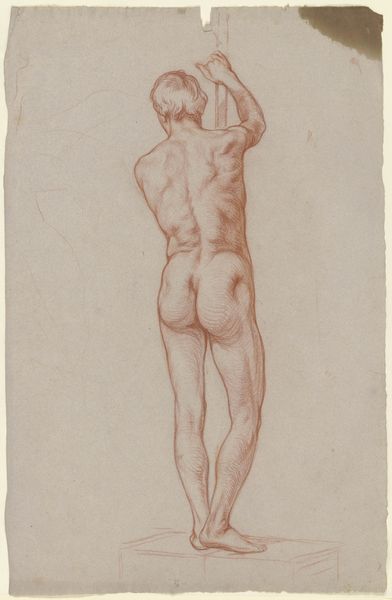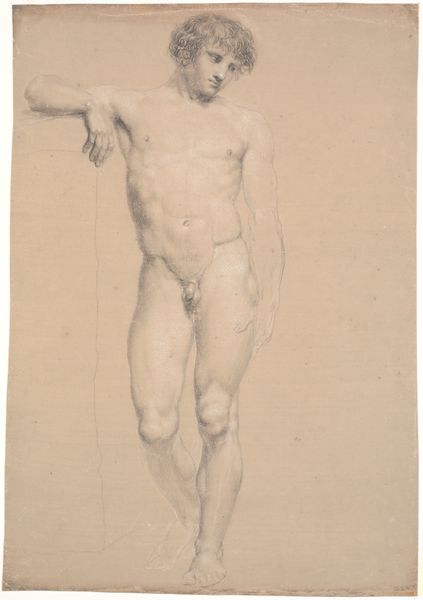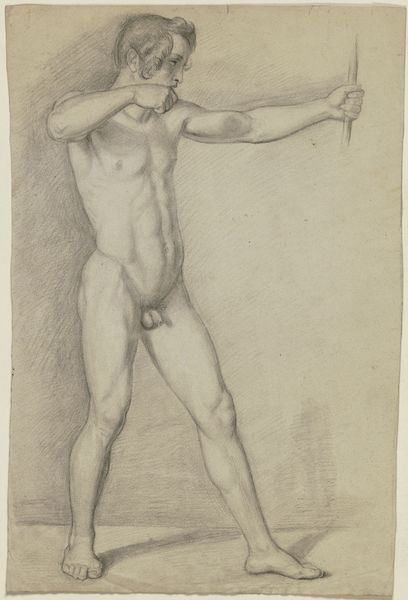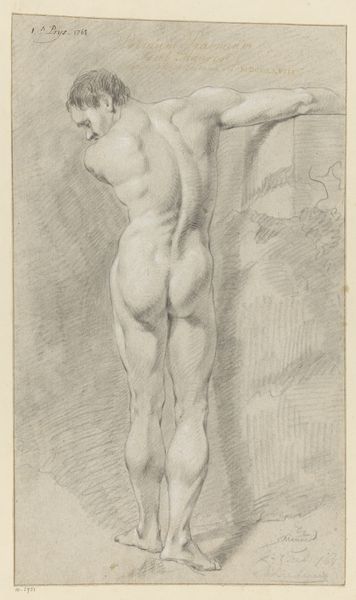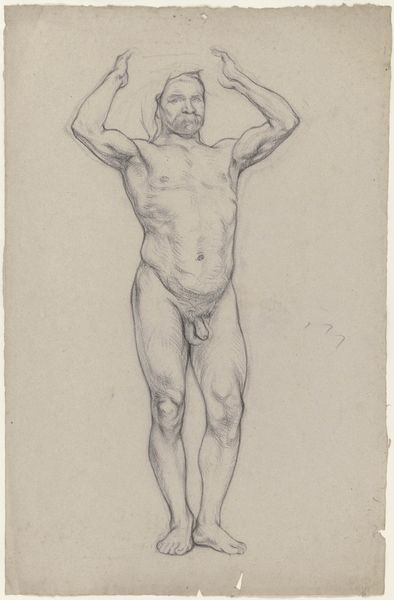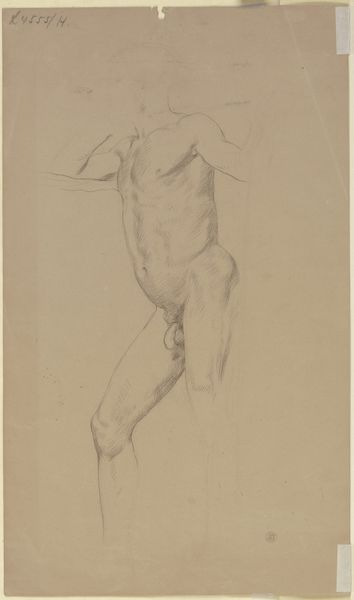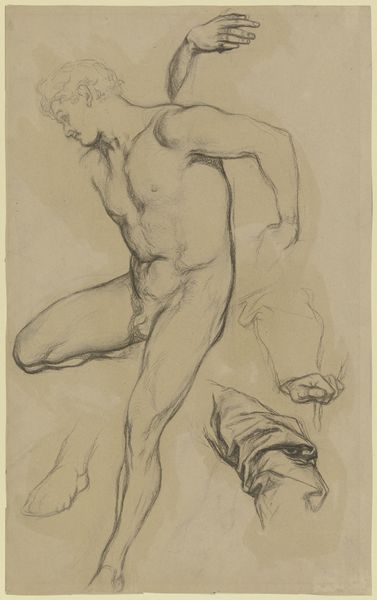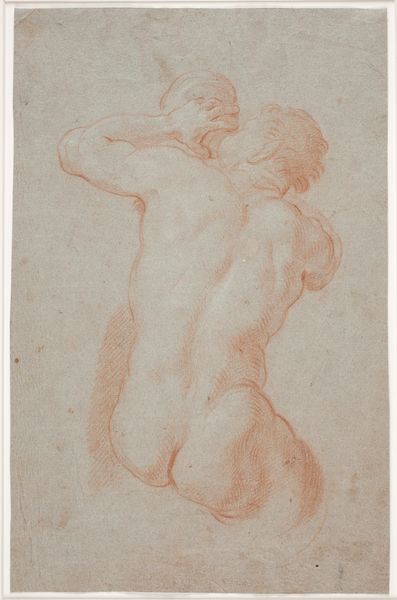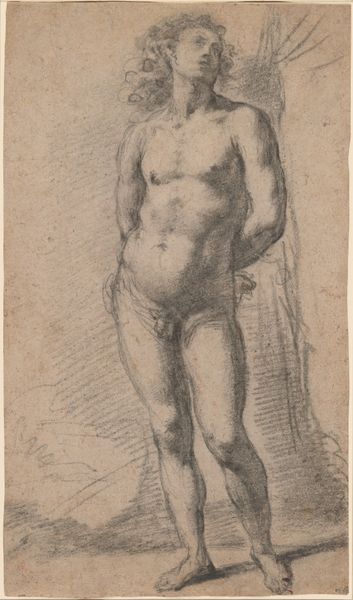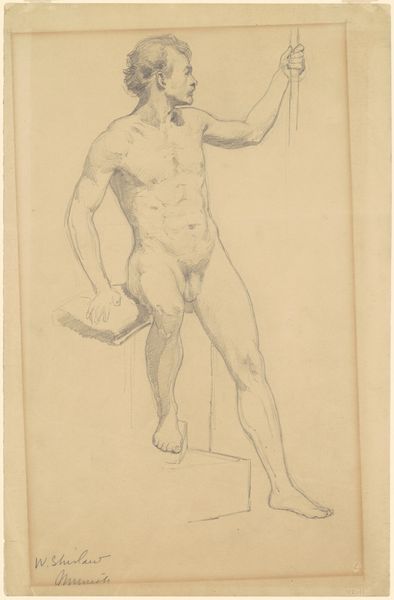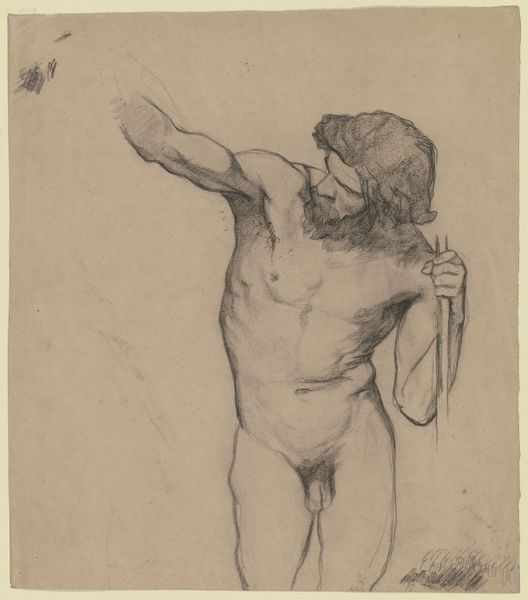
drawing, pencil
#
drawing
#
baroque
#
pencil sketch
#
figuration
#
pencil drawing
#
pencil
#
history-painting
#
nude
Dimensions: overall: 49.9 x 25.2 cm (19 5/8 x 9 15/16 in.)
Copyright: National Gallery of Art: CC0 1.0
Curator: I’m struck by the immediate expressiveness. The figure of Saint John the Baptist, captured in pencil around 1717 by François Le Moyne, has such dynamic energy. Editor: I agree about the energy. I immediately note the classical composition. The contrapposto pose, the attention to musculature—Le Moyne clearly draws upon the established visual language of idealized forms. Curator: Absolutely. But the interesting element here is the drawing's function within the broader context of artistic production. This wasn’t meant to be seen as a finished piece; instead, we’re looking at a preparatory sketch, revealing the artist's process. Editor: The pencil marks do reveal the labor. However, even as a preliminary study, the visual elements speak volumes. Note the hand gesture reaching upward and how it directs the gaze skyward, injecting a theological dimension into the piece. Curator: The upward gaze points to something important here about artistic apprenticeship and the broader culture of workshops. It shows the emphasis on preliminary studies which often became a collectable commodity. What started as workshop learning material found its way into collections for aesthetic enjoyment. Editor: True, but this also raises the question of how the Baroque embraced and stylized religiosity through the artist’s capable handling of line and shading. The textures— the softness of the skin, the slight roughness of the staff— enhance its visual appeal. Curator: Consider the broader historical factors. Louis XIV had died just two years prior to the likely date of this sketch; France was emerging from years of war. Such artistic themes and methods were instruments of projecting political authority through academies, making work like this a means to legitimize power. Editor: Ultimately, beyond historical and social underpinnings, what makes it a captivating piece of art is how well Le Moyne harnesses form to create visual depth and interest. Its structure transcends its immediate function or origins. Curator: I concur. The drawing is so compelling because it operates on different levels, showing the dynamics between the means of art production and formal execution. Editor: Precisely. Viewing both material conditions and aesthetic structure enhances its resonanc, as its appeal lies in how expertly crafted materials can generate visual depth and a lasting impression.
Comments
No comments
Be the first to comment and join the conversation on the ultimate creative platform.
